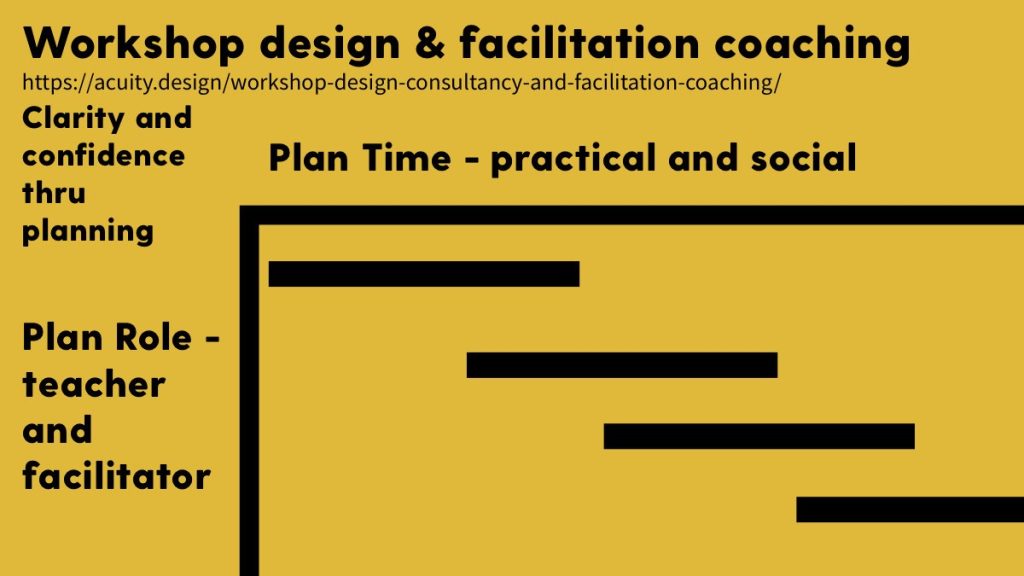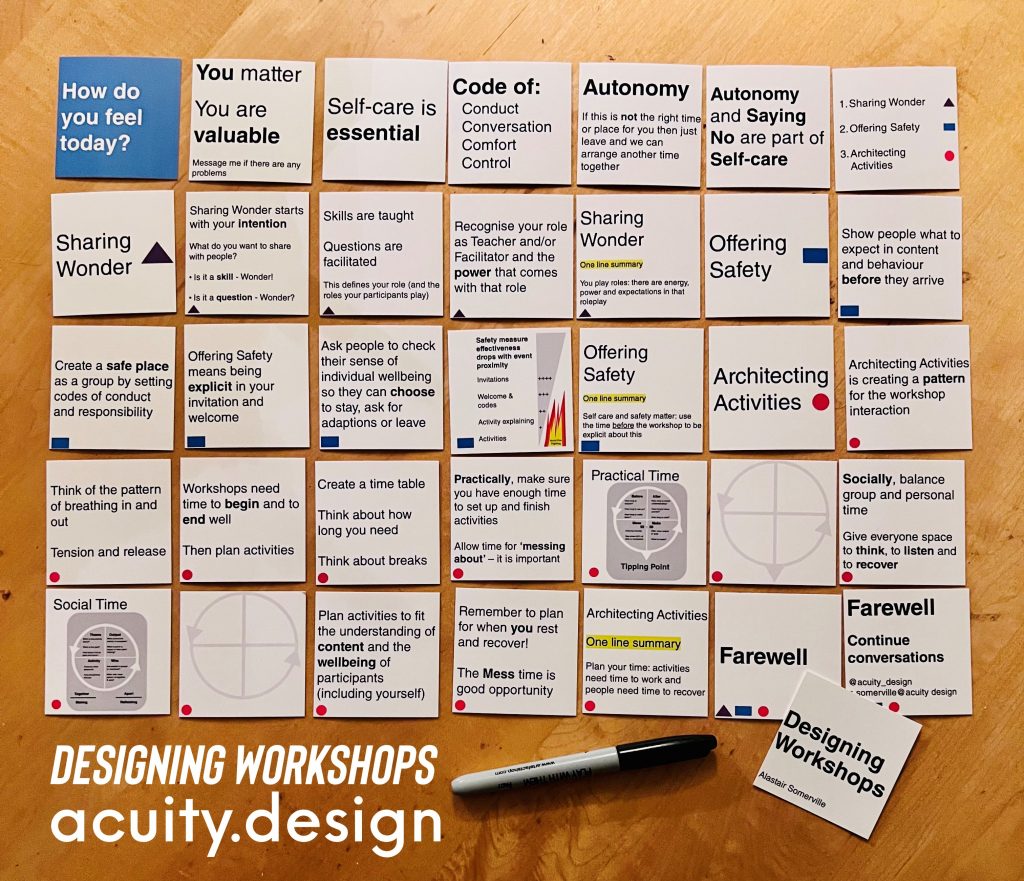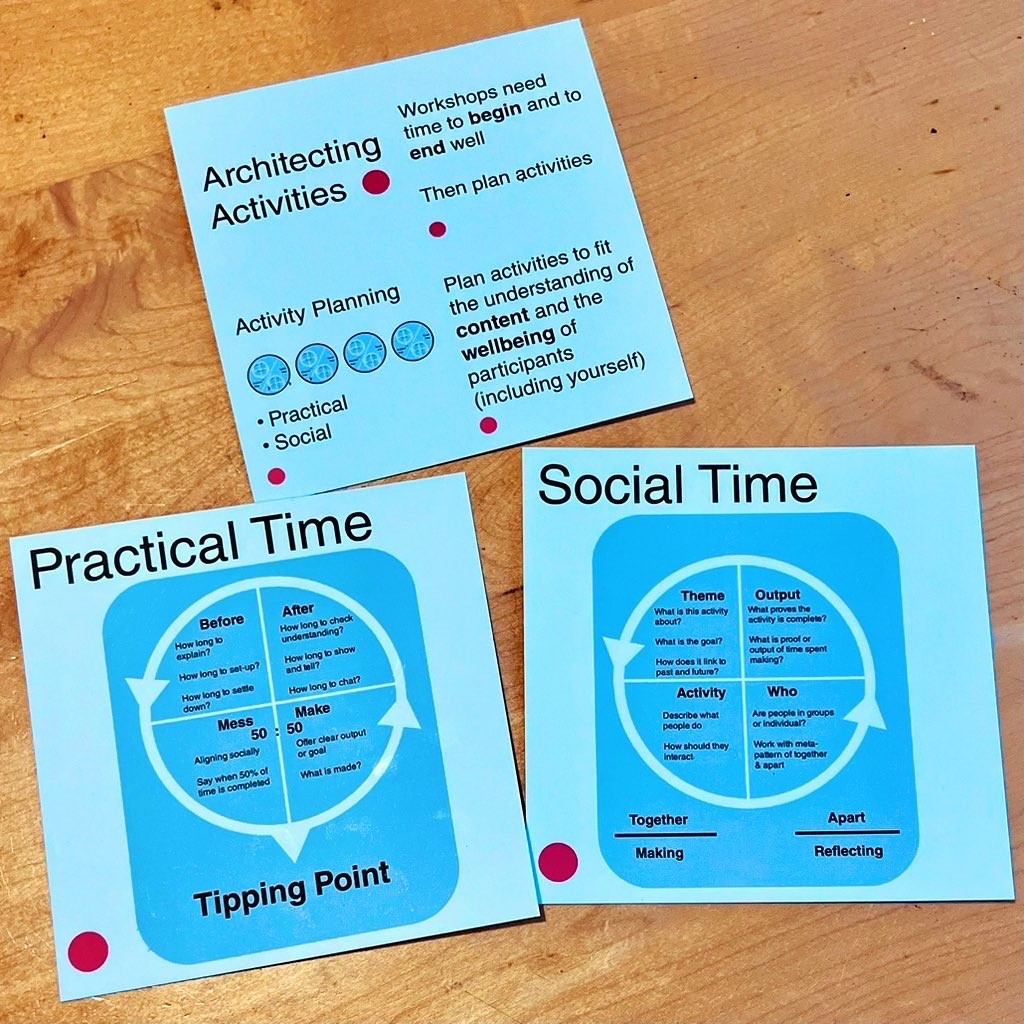
Designing and delivering your own workshop can be daunting. The mixture of design questions (like What is being taught? How can people learn? How do we share?) and facilitation questions (like How do we invite and welcome people? How do we create trust and safety?) can be a complicated mess.
This post is about a few ways of using framing tools to create some clarity about what to design in order to support confidence in delivery.
The foundation is time and roles.
A workshop (in-person, hybrid, virtual) has a time (not necessarily synchronous). Time is one axis.
A workshop has you. You are present. The roles you play is the second axis.
Two axes give you a space to design within. This needs form.
There is both an overarching structure for the workshop as an event (the macro) and the structures for all the activities you plan (the micro).
For my workshop design workshops and coaching service, I have some cards to help make those structures explicit.
Macro-structure

Designing workshops means being aware of many factors. These cards cover the main parts that I concentrate on. There are three parts that matter to me:
- Sharing Wonder
- Offering Safety
- Architecting Activities
Sharing Wonder is understanding what your workshop is about. Once you know what the theme is, then the content can be considered. With content, you can clarify what roles you play. Mostly the roles are Teacher and Facililitator. Being clear about your role is way of building confidence. You know who you are and who your workshop participants expect you to be. That relationship is crucial as trust and safety grow from it.
Offering Safety is being explicit about how you invite and welcome people. Modelling the behaviours you expect and providing choices for action is how you showing how autonomy is enabled.
Finally, Architecting Activities. Fitting all the stuff you need to do into the time available. This is where macro converts to micro. How you plan workshop activities is critical.
Micro-structure

At the activity level, you are balancing different forms of time. Time is the frame for the workshop. If you run too long, or too short, it is time that is noticeable to all of you in the workshop. The hurried workshop ending comes from the failure to plan time at the micro-level.
The forms of time that matter to me are Practical and Social.
Practically, can you fit what needs to be taught or facilitated into the time available? How long it takes to begin and finish can be hidden problems. Also how much time is needed just for ‘messing around’ – the importance of a group of people aligning themselves together, building trust and sharing knowledge.
Socially, do you and the workshop participants understand how you are working together? Workshops can be stressful and energy-depleting events. Predicting and planning for emotional and social pressure points means you can try to avoid them or mitigate their effects. At a micro-level, you need to feel the pressure you put on people and put on yourself.
There is energy in any workshop and how it burned and shared matters. Bad workshops demand too much energy from everyone, too much doing, too many expectations to perform. Allowing people to rest and to think enables their wellbeing and their wellbeing is how you rebuild your own sense of self and energy.
Doing more together
These cards are tools to help people I work with understand how they can find clarity, confidence and comfort in the workshops they design and run.
Let me know if you would like any help. I am always open for chats.